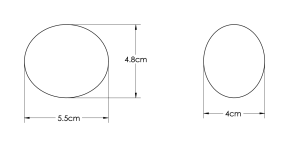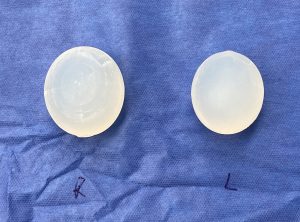Background: One technique of testicular enhancement is known as a side by side displacement method. In this approach testicle implants are placed below the existing testicles in the scrotum which, by by their size, becomes the dominant structure seen…hiding or displacing the smaller natural testicles. An approach which on the surface seems unlikely to work but does.
There are two reasons why the side bye side technique is effective, one controlled by the implant design and the one a natural effect that distinguished the natural testicle from an implant. In regards to the latter the natural testicle is attached and tethered by a cord (neuromuscular pedicle, thus they naturally want to be pulled up and ride higher in the scrotum. Conversely an implant has no such tether so they naturally by weight and gravity will always sit lower.
From an implant design standpoint the key is having an implant that is large enough to have a displacing effect. How much larger the implant needs to be than the natural testicle is not known precisely but my experience is that a minimum of 50% and more ideally 75% size is needed. This is predicated having a good idea of what the natural testicle and if there are any significant differences between the two sides. A preoperative ultrasound is useful for establishing the exact size of the natural testicles.
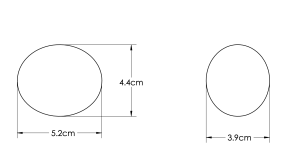
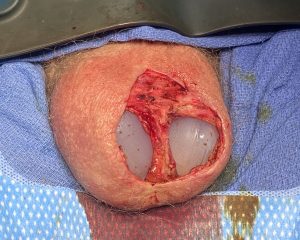
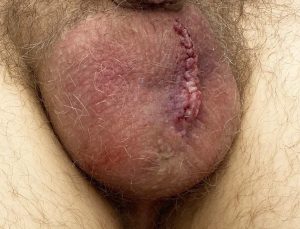
The side by side displacement technique works by adequate size and volume of implants that push the natural smaller testicles up and out of the way. With a 75% volume increase needed to do so satisfactorily the minimum implant size for most patients is 5.5cms which assumes that the natural testicle implants size is around 3.0cms. Larger natural testicle sizes will push implant volumes into the 6.0cm size or larger.
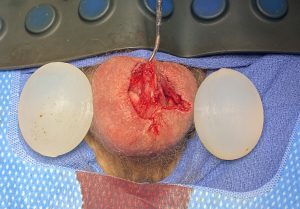
Key Points:
1) The side by side technique for testicular enhancement relies on implants large enough to satisfactorily push aside/hide the smaller natural testicles.
2) Preoperative ultrasound assessment of the natural testicle dimensions provides valuable insight into the design of the custom testicle implants.
3) In placing custom testicle implants a midline septum of tissue should be maintained between the two implant pockets.
Dr. Barry Eppley
World-Renowned Plastic Surgeon



